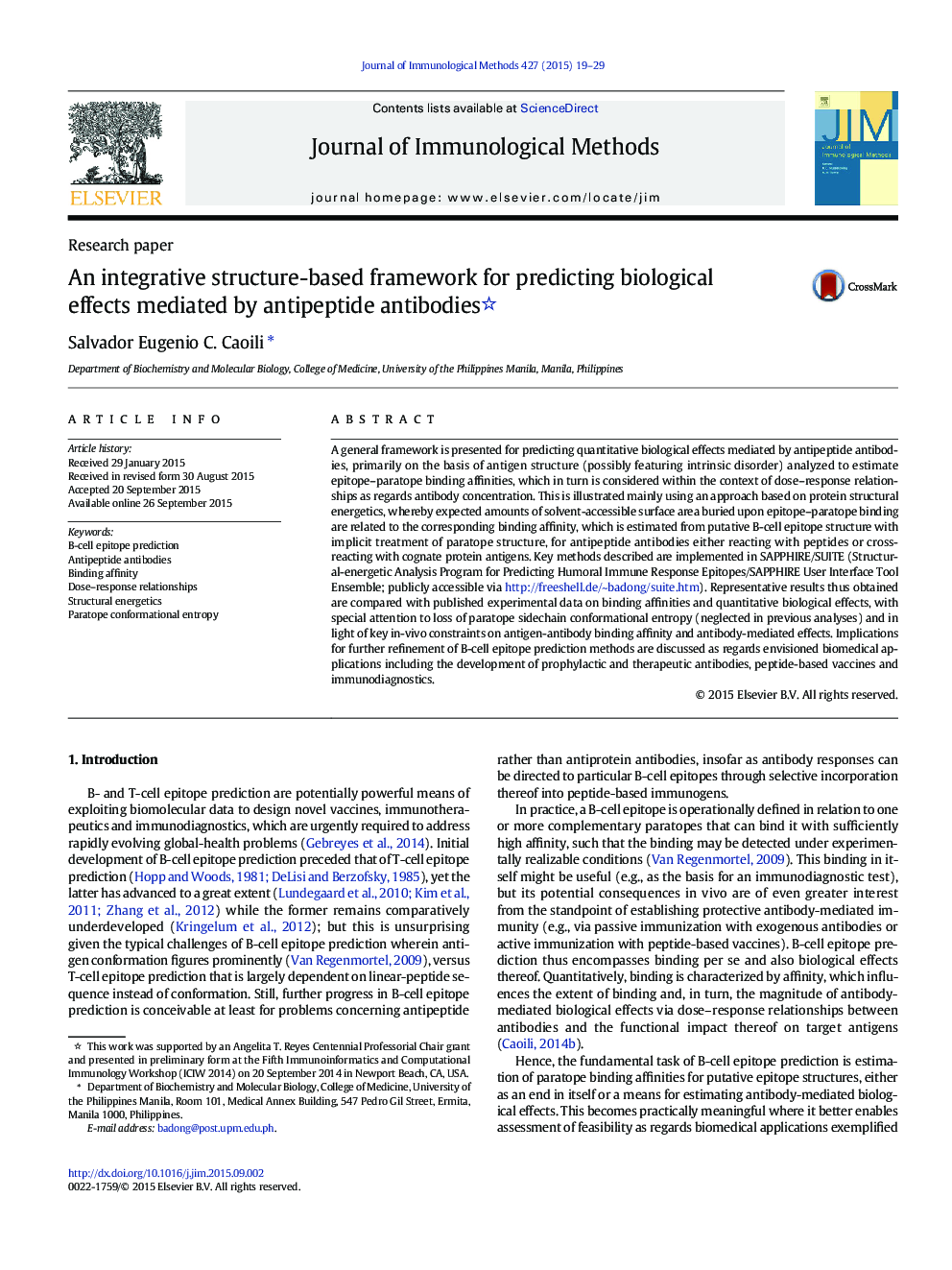| Article ID | Journal | Published Year | Pages | File Type |
|---|---|---|---|---|
| 2088010 | Journal of Immunological Methods | 2015 | 11 Pages |
A general framework is presented for predicting quantitative biological effects mediated by antipeptide antibodies, primarily on the basis of antigen structure (possibly featuring intrinsic disorder) analyzed to estimate epitope–paratope binding affinities, which in turn is considered within the context of dose–response relationships as regards antibody concentration. This is illustrated mainly using an approach based on protein structural energetics, whereby expected amounts of solvent-accessible surface area buried upon epitope–paratope binding are related to the corresponding binding affinity, which is estimated from putative B-cell epitope structure with implicit treatment of paratope structure, for antipeptide antibodies either reacting with peptides or cross-reacting with cognate protein antigens. Key methods described are implemented in SAPPHIRE/SUITE (Structural-energetic Analysis Program for Predicting Humoral Immune Response Epitopes/SAPPHIRE User Interface Tool Ensemble; publicly accessible via http://freeshell.de/~badong/suite.htm). Representative results thus obtained are compared with published experimental data on binding affinities and quantitative biological effects, with special attention to loss of paratope sidechain conformational entropy (neglected in previous analyses) and in light of key in-vivo constraints on antigen-antibody binding affinity and antibody-mediated effects. Implications for further refinement of B-cell epitope prediction methods are discussed as regards envisioned biomedical applications including the development of prophylactic and therapeutic antibodies, peptide-based vaccines and immunodiagnostics.
